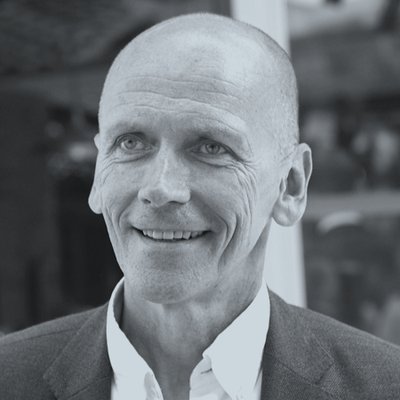
In this podcast, Bean Greet Verhaest talks with Ignace Van Doorselaere, CEO at Neuhaus.
He starts off the podcast by sharing an interesting anecdote about the origins of the company, which was founded by a Casanova, who preferred to go by the name Neuhaus, leading to the company’s name. Neuhaus, credited as the inventors of the praline, faced severe challenges during the COVID-19 pandemic, as 85% of their business, reliant heavily on tourism and interpersonal interactions, was disrupted. Despite this, the company managed to weather the storm through adopting dual strategies.
“We bought two pairs of glasses”, Ignace shares. The first pair focused on immediate survival, ensuring the company maintained adequate cash reserves, while the second pair was future-oriented. They invested heavily in building the future, ensuring the company would emerge stronger in 2022-2023. This forward-looking approach provided people with an “offensive energy” and a perspective to strive towards.
Ignace admits that balancing the needs of the employees and the long-term perspective of the company was challenging. He compares the struggle to a martial arts fight, stating, “Pain has a direction. If you push against the pain, it hurts more. You have to turn away from that pain, not go against it, find a new direction.” Ignace emphasizes the importance of communicating an honest picture of the future to the employees to create a dynamic mindset in people’s heads.
Remote working was another aspect that was considered during the crisis. While production kept running, connecting with other people became a bit of a blind spot. Until October 2020, they allowed employees to come to the office if they wished, focusing more on the output of the task rather than the location where it was completed.
In the conversation, Ignace uses the domino effect metaphor to discuss the importance of clarity in a business’s direction and its implementation. “If you set up five dominos, and you push the first one, and the first four fall, but the fifth one is too far away and doesn’t fall, you don’t have a score of 4 out of 5. You have a score of 0 out of 5.” He considers the first and last domino the most crucial, representing clarity and implementation, respectively. He stresses the role of leaders in ensuring these two dominos are well placed.
According to Ignace, the essence of a company lies in the people it employs. He describes the culture of a company as “not something written on the wall, but something that exists in people”. Recruitment is a crucial part of Neuhaus’ strategy, and they consider a potential employee’s fit within the company’s culture and values a key aspect. To evaluate the workplace environment, he conducts monthly breakfast sessions with floor-level employees and retail workers to hear their perspectives on the company.
Speaking about performance management, Ignace believes that many organizations today focus too much on the framework, the processes that help manage the content, rather than the content itself. He considers the traditional performance management model of annual evaluations to be outdated and ineffective, likening it to taking a photo instead of watching a film. At Neuhaus, they don’t conduct these types of evaluations.
Neuhaus places significant importance on recruitment and developing a feedback culture within the organization. To foster this, they conduct seminars to train their top 50 leaders, with the belief that only the trainable can be trained and only the coachable can be coached. Ignace says, “Nothing helps if the leaders don’t do it themselves. You have to invest in people who are ready for it and want it.”
In the realm of adaptability, Ignace speaks about the balance between focus and flexibility. He brings up a metaphor of a house, describing that “A house should have a solid foundation, but it should also have the flexibility to withstand storms and winds. The same is true for a company. We must remain focused on our direction, but also be flexible to navigate the winds of change.”
Ignace emphasizes the importance of positive storytelling in businesses without ignoring the negatives. He notes a significant cultural shift, stating, “Over four years, 80% of the leadership positions have been filled by new individuals,” which required the team to transition from obedience to autonomy.
Setting clear goals forms the cornerstone of resilience, as he affirms, “If people understand what they are building towards, they will find resilience.” Ignace also champions the role of good leadership, involving informal interactions and an unhurried schedule. In his words, “A crucial element of resilience is not having a packed schedule. It’s not desirable to have a full schedule.”
Furthermore, Ignace warns against the dangers of overloading an organization, remarking, “The busier an organization is, the less resilience it has because its members are always stuck in the obligatory framework and never get a chance to breathe.”
Ignace finds his inspiration from fiction, martial arts, and the inspirational figures in his life, such as Bob Verbeeck and Alexander Vandamme. He values a calm approach in life, despite the intensity of his interests. His daily ritual includes seeking quiet moments, a task that cooking has come to replace sports. He believes in the importance of avoiding exhaustion, often referred to as “going into the red”, and sees life itself as a vacation. This includes taking necessary steps to avoid constant stress, and making fundamental choices when the situation demands, whether in work or personal relationships, in order to find peace and relaxation.
Let’s sit down and we’ll pour you a cup of consultancy advice. With a spoonful of energy, and a shot of sparkling ideas.
A community of seasoned consultants. Or as we like to call ourselves: Beans. Every Bean brings his/her unique experience and expertise to the table — with a splash of bravery. Want to level up your culture, leadership, teams, and organization? Give us a call!